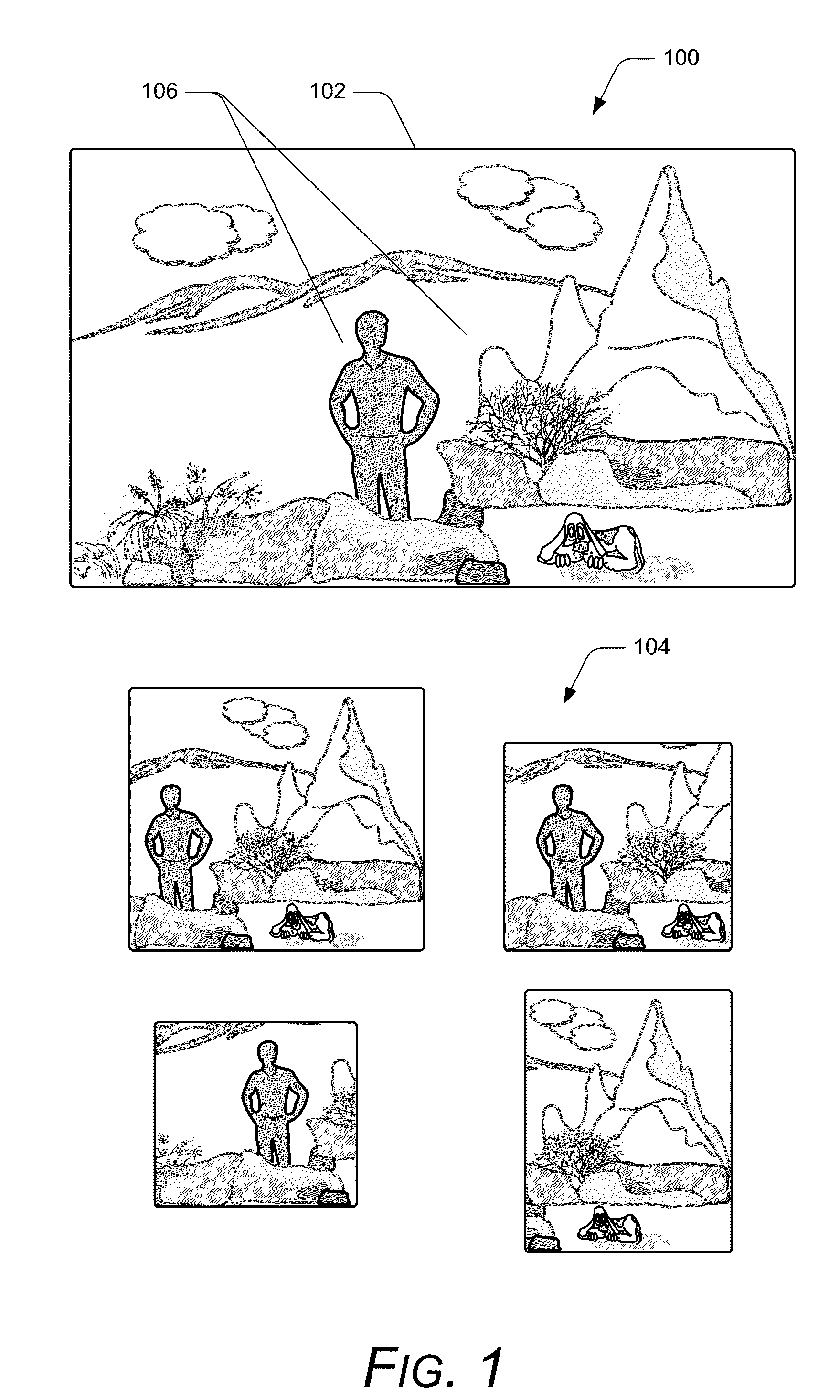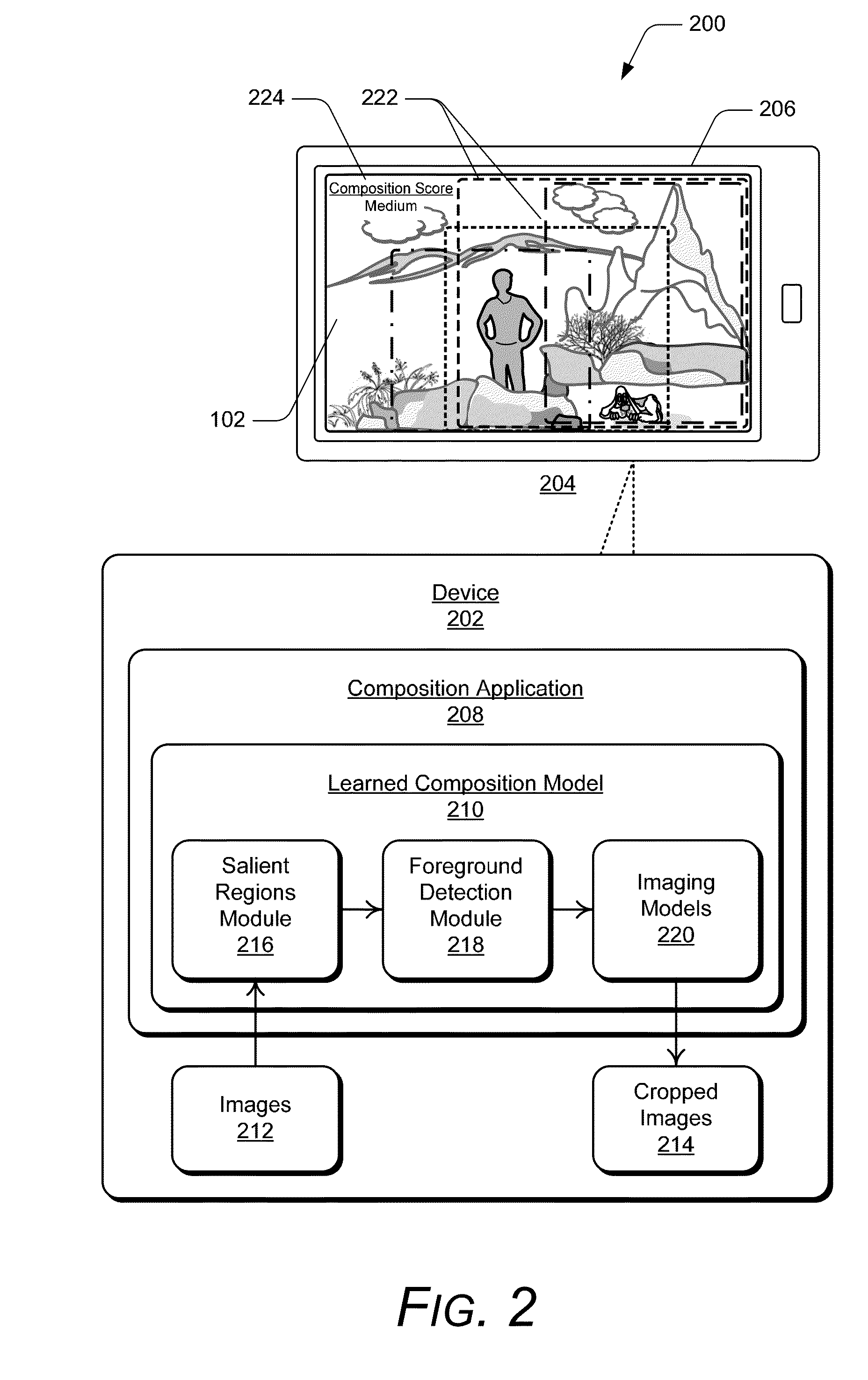Iterative saliency map estimation
a saliency map and saliency technology, applied in image analysis, image enhancement, instruments, etc., can solve the problems of poor visual image, limited features of an image being determined, and limited in the handling of complex scenes of images with multiple objects
- Summary
- Abstract
- Description
- Claims
- Application Information
AI Technical Summary
Benefits of technology
Problems solved by technology
Method used
Image
Examples
Embodiment Construction
[0021]Embodiments of iterative saliency map estimation are described, along with the features and aspects of image foreground detection and combined composition and change-based models for image cropping. Digital images, such as photographs, vary in shape, size (e.g., aspect ratio), lighting, and appearance, and image composition styles and preferences can vary with users. Composition rules and criteria are not fixed, and labeled results of image cropping are not easily measured. A learning-based approach for automatic image cropping is described, and a learned composition model is developed utilizing a first database that includes a large set of well-composed images (e.g., professional photographer images) and a second database containing images before and after cropping by expert photographers.
[0022]A saliency map represents the visual saliency of an image scene, and the most prominent, relevant, and / or noticeable regions of the image are the salient image regions that are determi...
PUM
 Login to View More
Login to View More Abstract
Description
Claims
Application Information
 Login to View More
Login to View More - R&D
- Intellectual Property
- Life Sciences
- Materials
- Tech Scout
- Unparalleled Data Quality
- Higher Quality Content
- 60% Fewer Hallucinations
Browse by: Latest US Patents, China's latest patents, Technical Efficacy Thesaurus, Application Domain, Technology Topic, Popular Technical Reports.
© 2025 PatSnap. All rights reserved.Legal|Privacy policy|Modern Slavery Act Transparency Statement|Sitemap|About US| Contact US: help@patsnap.com



